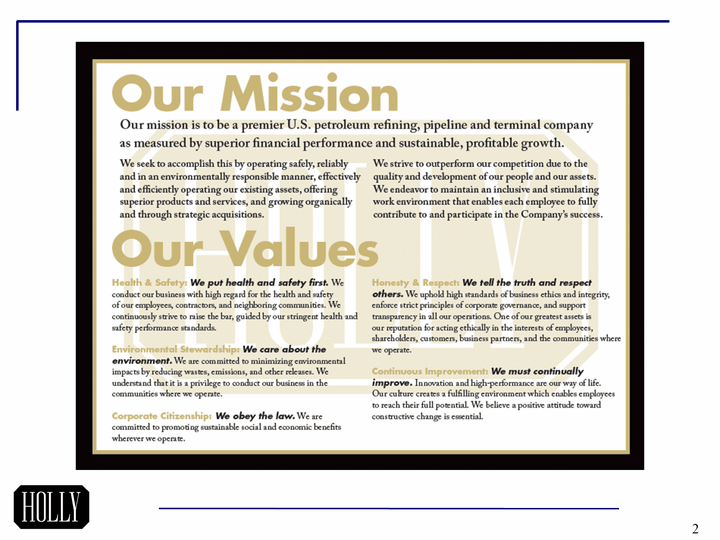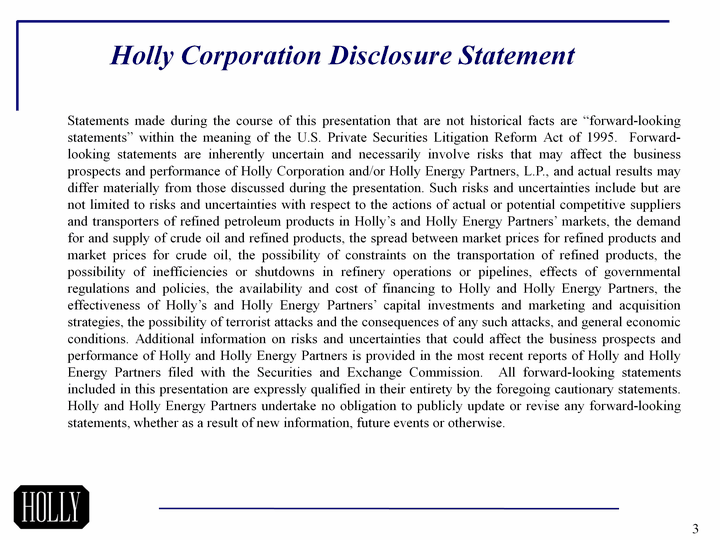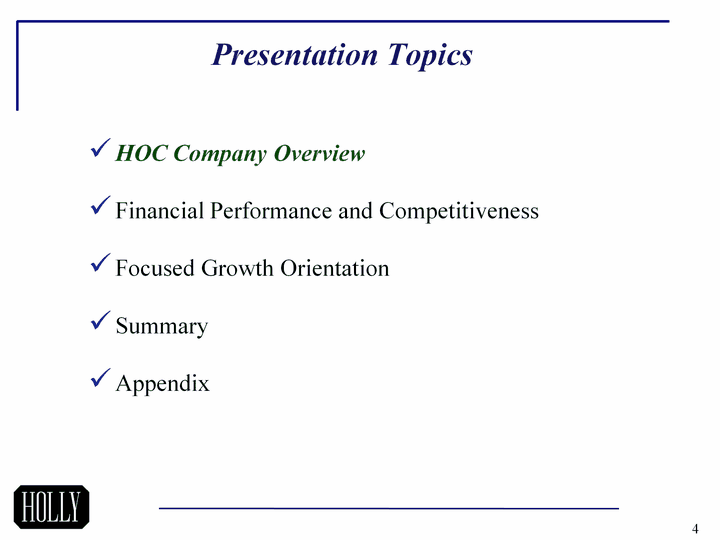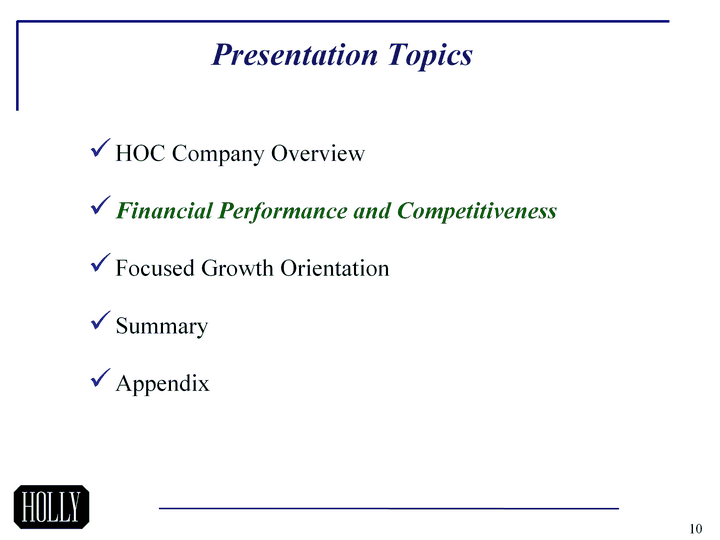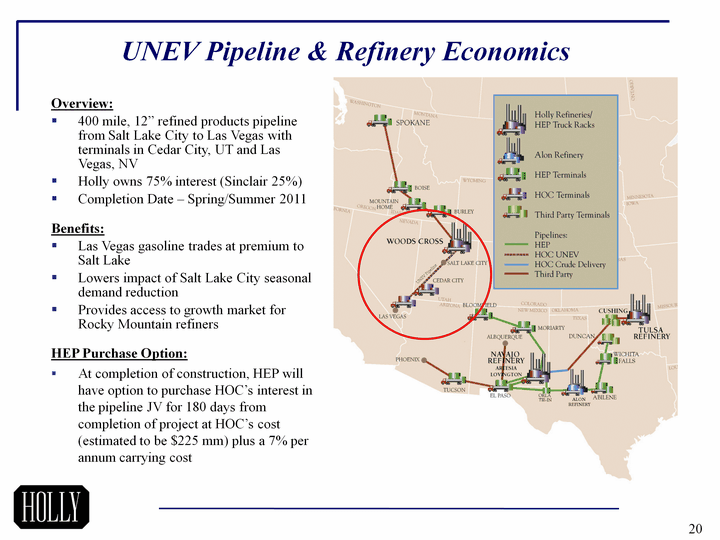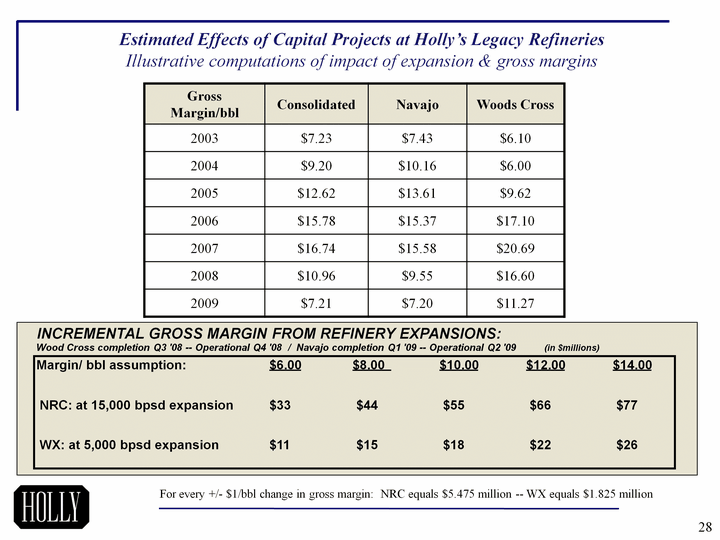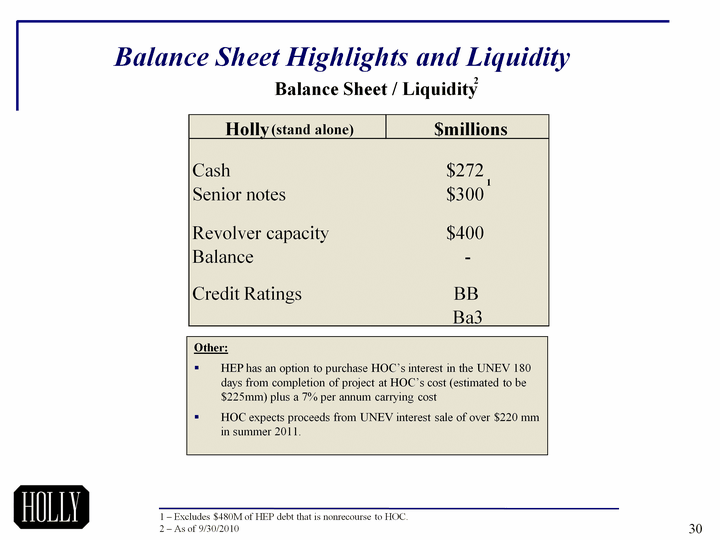Free signup for more
- Track your favorite companies
- Receive email alerts for new filings
- Personalized dashboard of news and more
- Access all data and search results
Filing tables
HF Sinclair similar filings
- 22 Feb 11 Holly Corporation and Frontier Oil Corporation Announce Merger of Equals
- 4 Feb 11 Holly Corporation Reports Delay in Return to Planned Operating Levels at Navajo Refinery Due to Weather
- 31 Jan 11 Holly Corporation Reports on Power Failure at its Navajo Refinery
- 6 Jan 11 Regulation FD Disclosure
- 17 Nov 10 Regulation FD Disclosure
- 4 Nov 10 Holly Corporation Reports Third Quarter 2010 Results
- 29 Sep 10 Regulation FD Disclosure
Filing view
External links

